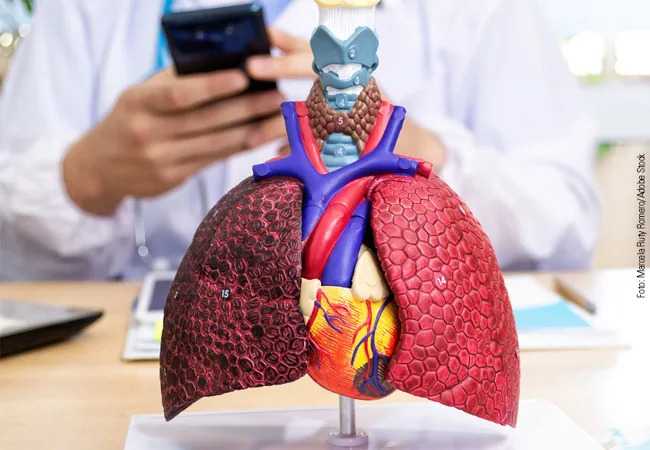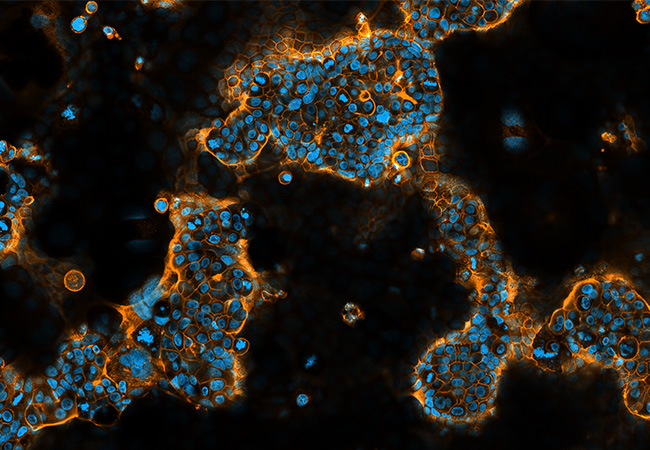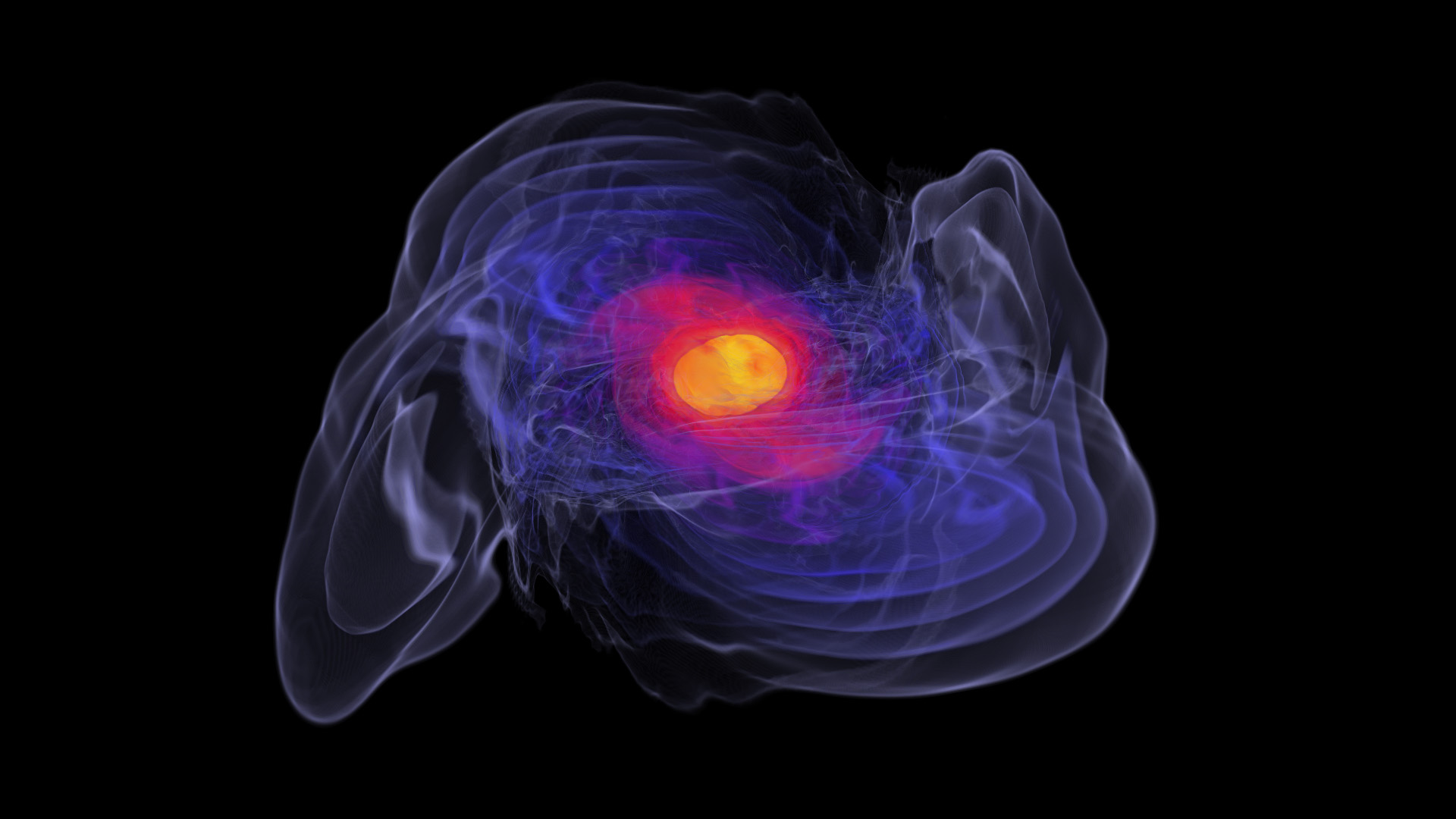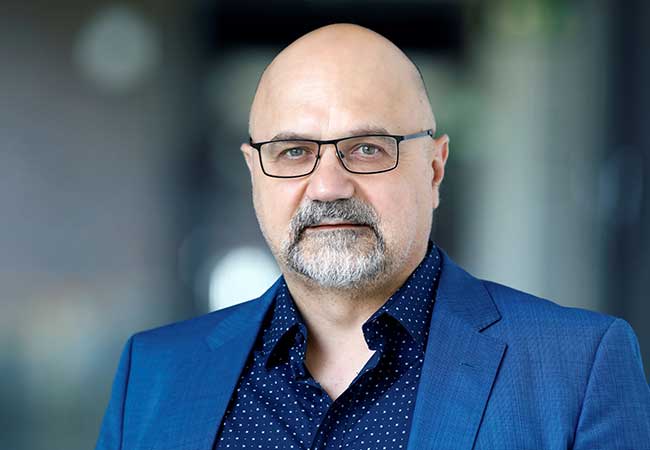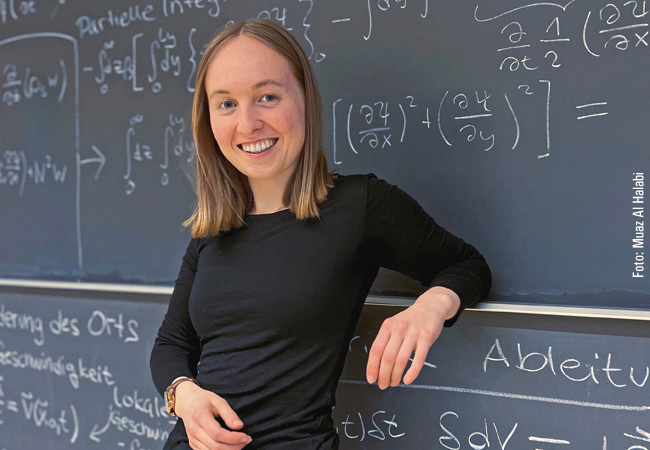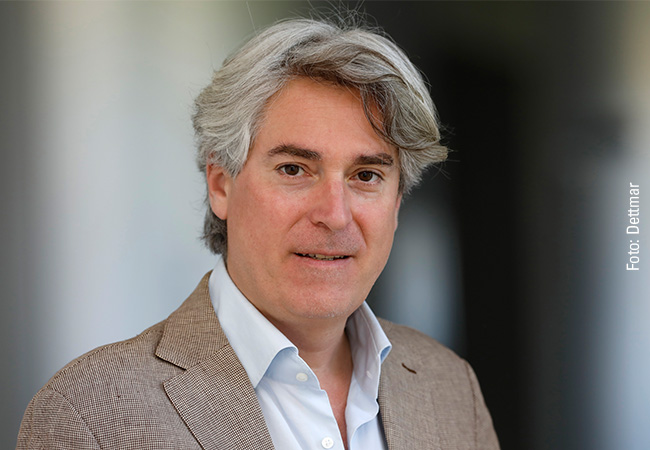To understand why heavy elements exist in our universe, you have to explore neutron stars, kilonovas and gravitational waves. The cluster project ELEMENTS brings together some one hundred particle and astrophysicists, who have joined forces with just this goal in mind.

Our universe is full of extremes: incredibly massive and compact objects collide in unimaginable distances, releasing the tiniest particles. These extreme phenomena are a central topic of the research project ELEMENTS (Exploring the Universe from Microscopic to Macroscopic Scales). Together, the team of around 100 physicists is working on answers to the question of how heavy elements, including copper, gold and lead, are formed in the universe. „What we are doing is fundamental research – after all, even though gold is all around us, it didn’t originate on our planet,“ explains ELEMENTS spokesperson Professor Luciano Rezzolla of Goethe University Frankfurt’s Institute for Theoretical Physics (ITP). „But it also doesn’t come from the stars, which produce very few heavy elements.“ So, in principle, both theorists and experimenters want to know where our gold comes from.
The neutron star: A force of nature
Doing so requires several ingredients and a lot of time. At the end of its long life, a star collapses under its own gravity and explodes as a supernova: Gas, dust and lots of energy are thrown into the surrounding space. These remnants are later visible as nebulae of fascinating shapes and colors. Depending on how massive („big“) the star originally was, a stellar black hole or a neutron star is formed. While black holes are widely known, their smaller siblings, neutron stars, receive comparatively little notice – even though here, too, we are talking about yet another superlative object: the density within a neutron star is so great that, despite having a mass of about two suns, its diameter is only as large as the city of Frankfurt!
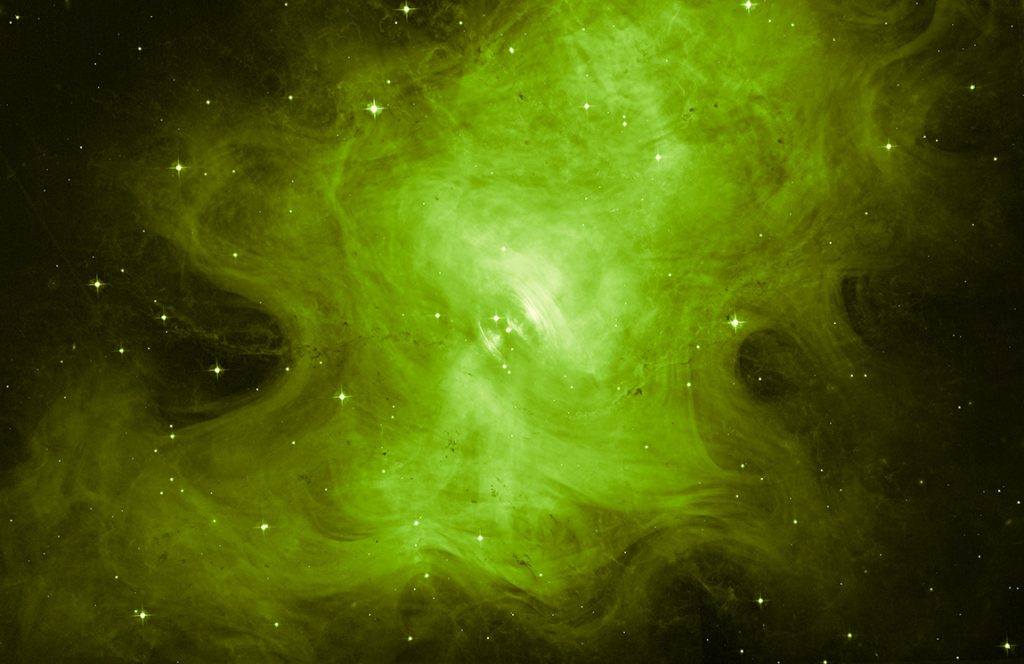
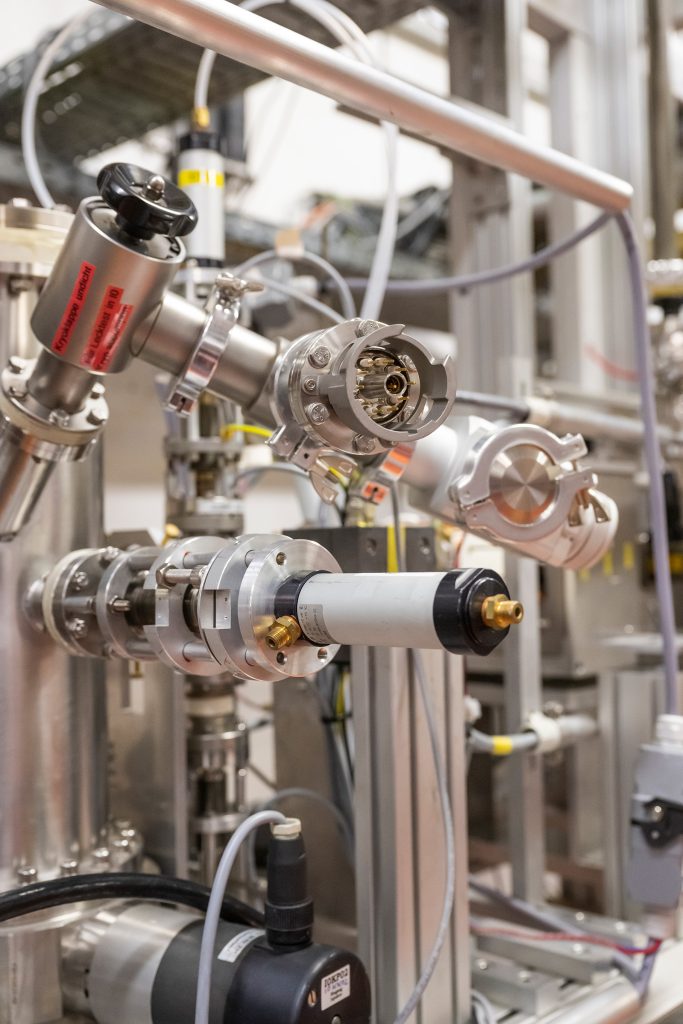
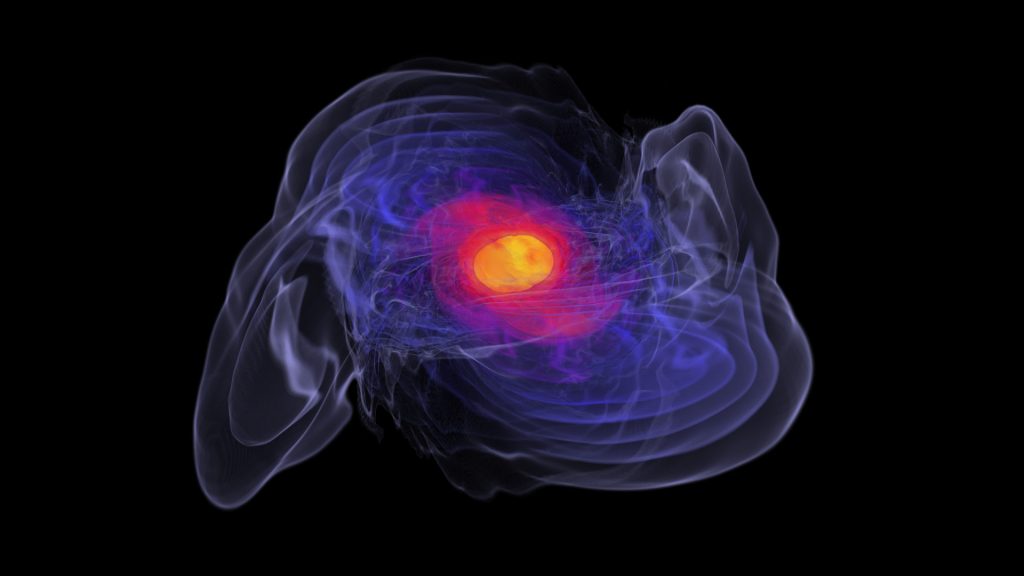
From left to right: Crab Nebula (NASA and ESA, Photo: M. Weisskopf/Marshall Space Flight Center), particle accelerator (Photo: Klaus Mai; TU Darmstadt), simulation of colliding neutron stars (Photo: Luciano Rezzolla, Goethe University Frankfurt).
How heavy elements are formed
Not only does it take two of these extraordinary astronomical objects to create heavy elements, they also have to collide. When two neutron stars with their enormous masses collide, a so-called kilonova occurs, a phenomenon first detected in 2017 by measuring gravitational waves. This merger is thought to result in a state similar to what existed in the first few seconds after the Big Bang, known as the quark-gluon plasma. Quarks and gluons are the elementary components of atomic nuclei and thus the building blocks of any element. It is only under such extreme conditions that their attraction is broken, and the formation of heavy elements becomes possible. The scientists of the ELEMENTS cluster project are using a variety of means to investigate the processes in these extreme states of matter, how heavy elements can be created, and how these complex interactions can be measured and observed from Earth. While experiments at the particle accelerators in Darmstadt are carried out at the microscopic level, Goethe University approaches the problem from its theoretical side. Open Science and Open Access, i.e. the free availability of data and results, play a major role: „The data we produce in the laboratory is on a completely different scale than, for example, astrophysicists,“ says working group leader Prof. Dr. Hannah Elfner of Goethe University Frankfurt’s Institute for Theoretical Physics. „Open Science is what makes productive interdisciplinary collaboration possible in the first place.“
Supercomputers calculate complex models
„We’re dealing with very complex scientific questions here that no single individual or even my research group could answer alone, not without taking a few centuries of time. It takes a very large team,“ Prof. Rezzolla explains. As such, his team uses high-performance computers, like the „Goethe NHR“ mainframe, which recently won an award for its energy efficiency, to calculate complex models and simulations that are essential for interpreting astronomical observations. Based on Einstein’s theory of general relativity, the mainframe can be used to both describe black holes and neutron stars, and to explain their massive interactions.
Tracking down the elements at the speed of light
The working group led by co-spokesperson Prof. Norbert Pietralla from the Technical University of Darmstadt, on the other hand, brings the universe directly into the laboratory at the electron accelerator „S-DALINAC“. Using its energy recovery mode, which is unique in the world, S-DALINAC can accelerate particles in a highly efficient manner: The electrons rotate several times through the main accelerator, saving considerable amounts of energy. The process allows the interactions involved in the formation of new elements to be studied at nearly the speed of light.
Phyllis Mania
Let’s do it: Goethe University Frankfurt submits four new and one existing research cluster to the Excellence Strategy competition
Goethe University Frankfurt is applying for the upcoming round of the German federal and state governments’ Excellence Strategy with four new clusters on the research topics Confidence in Conflict (CONTRUST), Infection and Inflammation (EMTHERA), Origin of Heavy Elements (ELEMENTS), and Cellular Architectures (SCALE). The applications combine Goethe University’s competencies and forward-looking ideas with those of colleagues from the strategic alliance of Rhine-Main Universities (RMU) and other partners from the four major non-university research organizations. The Cardio-Pulmonary Institute (CPI) Cluster of Excellence, in existence since 2019, will submit a full proposal directly in 2024.
An introduction to the clusters follows below.
Heart and lung disease: Cardio-Pulmonary Institute (CPI)
Heart and lung diseases are one of the leading causes of death worldwide. The Cardio-Pulmonary Institute (CPI) is dedicated to…
Infection and inflammation: EMTHERA
Developing new therapeutic approaches for complex diseases: The EMTHERA initiative is applying to become a Cluster of Excellence. The so-called cytokine…
Cellular Architectures: SCALE
The name of the cluster initiative SCALE stands for „SubCellular Architecture of LifE“. The project is entering the German federal…
Trust in Conflict: CONTRUST
How dissonance in conflict can dissolve into trust: The ConTrust cluster project explores where such potential can be found, even…
Origin of Heavy Chemical Elements: ELEMENTS
To understand why heavy elements exist in our universe, you have to explore neutron stars, kilonovas and gravitational waves. The…
Questions for ELEMENTS spokesperson Prof. Luciano Rezzolla
UniReport: What is your goal in applying for funding as a cluster of excellence? Luciano Rezzolla: The goal shared by all…


